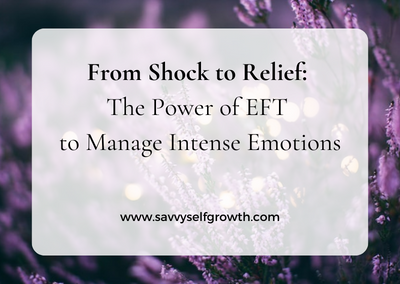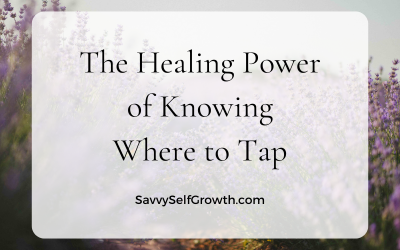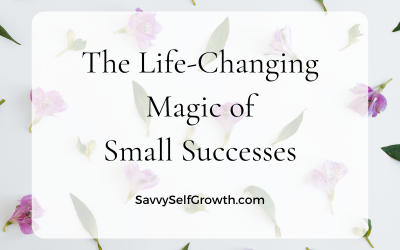You can cut all the flowers but you cannot keep Spring from coming.”
Pablo Neruda
A few years ago, I was working with someone over the festive season who experienced a very painful shock, loss, and extreme disappointment after the actions of a family member.
This client was deeply depressed because of the family member’s behaviour. I thought it would be a long journey for this client to get out of the deep, dark hole that she was in.
Have you noticed how often we assume the way things are for us should be true for others too?
I have personal experience with depression. My own road to recovery was long and slow.
The shock suddenly sunk in
One day over that holiday period, she started crying inconsolably due to news she’d received earlier that day. The shock suddenly hit her, and she could not stop crying. I was available at the time, and we could get on a Zoom call to work with the painful emotions.
My tool of choice with this kind of emotional upset is always EFT. It works gently yet fast and can be applied over any distance (we were thousands of miles apart).
We used EFT for the hurt, the shock, the feelings of rejection, the deep disappointment… there were so many, and they ran deep.
To tell the truth: when I saw the state she was in at the start of the session (even though I trusted EFT) I thought, “EFT is not going to be enough this time.”
Surprise and relief
To my surprise and delight, within about 45 minutes she was feeling calm and resourceful enough to think clearly.
She could face the challenges ahead, and she’d completely stopped crying. Of course, there were still practical things to sort out. And none of those practical actions would have been possible if she was still in an inconsolable, desperate state.
I’ve been working with EFT for 16 years. Even though I’ve seen miracles in that time, I am still sometimes astounded at how fast it can work, how intense emotions can be released in a very short time, and how rapidly EFT can help us to become resourceful and calm.
EFT Resources
If you haven’t tried EFT, there is a huge amount of free material available for self-help. To see examples of EFT, feel free to look up my EFT videos on FB, or on Youtube.
Even though free resources are fantastic, it’s best to experience EFT initially with someone who can really help you get the best out of this versatile method. There are several reasons for that, and I’ll write another article about that in due course. One of them is — it’s harder to be the patient and the dr at the same time.
Also: If you’re facing a big challenge, something very painful, trauma, or abuse, I highly recommend you work with a skilled, trained practitioner to work through all the layers and aspects of the challenge in a safe way. Yes, you can make some headway by yourself. Yet often our subconscious protects us from feeling the past pain, so it’ll be harder to access the deep layers by ourselves.
A mix of emotions
Have you noticed how we can feel many seemingly conflicting emotions all at the same time around events we don’t have control over? We can feel angry, scared, deep grief, annoyed, terrified, disappointed, guilty, revengeful, sad, and more — about one thing. It’s confusing and we don’t know what to do with all of this. Often we ‘swallow’ or suppress them, where it doesn’t do us any favours.
Thinking, feeling and action: What happens in the brain
It’s hard to think clearly when we have so many emotions vying for attention at the same time. The amygdala is a tiny structure in our brain that takes care of our safety. When it’s not happy, much of the blood flow in our brain is directed there, instead of to the prefrontal cortex. That’s the part we use to analyse, rationalise, plan, set goals, and think logically and clearly through a process.
When we can’t analyse or think clearly, it’s harder to make wise choices. And in that space, wise action is even less likely. When we’re upset, we sometimes behave in knee-jerk ways, instead of waiting for a better time. Or, we don’t take action because we’re frozen.
When we feel calmer, our prefrontal cortex gets more blood flow. Then we can think through all the options and aspects of a problem, and decide what course of action might be best, and take it.
Response to emotions
Our emotions are strong forces that ‘make’ us behave in ways we wouldn’t choose consciously. There are many reasons for that. I bet you can think of a time when you did something you’re not particularly proud of, yet you couldn’t stop yourself.
We shout, we cower, we hide, we lash out, we run away, and we inflict harm… because our emotions run the show. Salespeople are taught that people make decisions emotionally — not rationally. And that’s exactly how things happen in the rest of life, too.
The very best way I know of to get back into the driver’s seat more often, is to have a way to manage and discharge our emotions.
The most useful way I know of to manage and discharge those intense and sometimes conflicting emotions, is through using EFT. I love self-help tools, and with EFT we can help ourselves to a large extent. Sometimes it might be necessary to call in professional help if we’re not making progress.
I’d love to hear from you:
What do you do when strong emotions derail your plans or side-line you? How do you manage them? What tools do you find useful?




